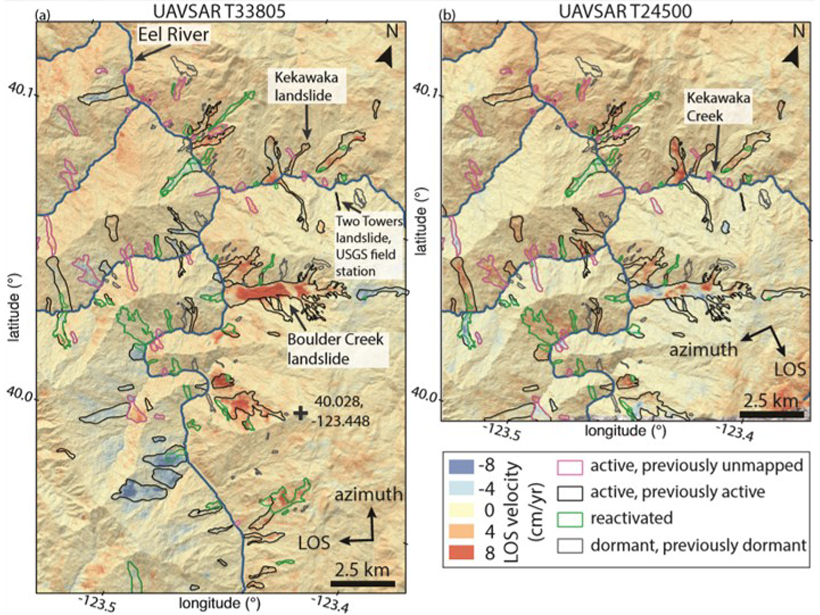Ten years after the Wenchuan earthquake, most of the new sediment it produced remained on the landscape, indicating a long recovery time.
Amy E. East
Associate Editor, JGR: Earth Surface (to 2018)
Editor-in-Chief, JGR: Earth Surface (from 2019)
How is Modern Climate Change Affecting Landscape Processes?
Landscapes will respond to hydroclimatic changes associated with modern global warming, such as increasing extreme storms and wildfire, but to what extent is physical landscape change already evident?
Dust in the Wind: Human Impacts to the Colorado Front Range
A recent increase in airborne dust has been attributed to both climate and land use, with human activity playing a substantial role, especially in summertime at low elevations.
New Special Collection: Fire in the Earth System
Papers are invited for a new cross-journal special collection presenting advances in understanding the physical and biogeochemical processes associated with landscape fires and their impacts.
Permafrost Thaws Rapidly as Arctic River Flooding Increases
As climate warms, Arctic rivers carry higher flows and flood earlier in the spring, causing underlying permafrost to thaw rapidly.
Landslide Activity Ramps Up With Extreme Rainfall
An increase in activity of hundreds of slow-moving landslides during extreme wet conditions in California provides insights into the landscape response to ongoing climate change.
Formation of Sedimentary Deposits: Bypass Versus Mass Extraction
Grain size and sediment delivery pathways from the Ganges delta have been used to model downstream facies changes.
Introducing the New Editor-in-Chief of JGR: Earth Surface
Find out who is taking over the helm of JGR: Earth Surface and her plans for taking the journal forward in the coming years.
A Closer Look at an Undersea Source of Alaskan Earthquakes
A systematic survey offers a striking portrait of movement along a 500-kilometer-long undersea section of the Queen Charlotte–Fairweather fault off the coast of southeastern Alaska.
Synthesizing Studies of Dam Removal
Dam Removal: Synthesis of Ecological and Physical Responses;
Fort Collins, Colorado, 16–20 June 2014









